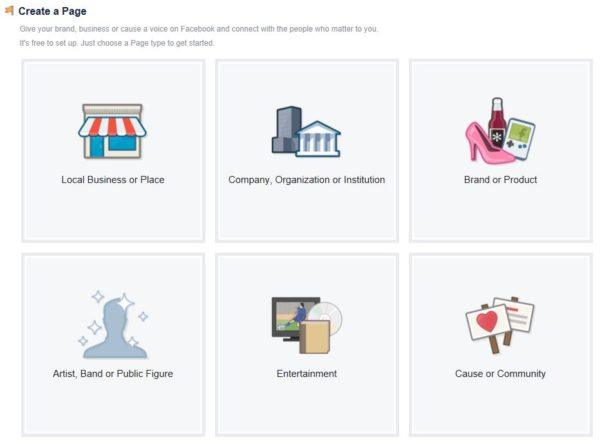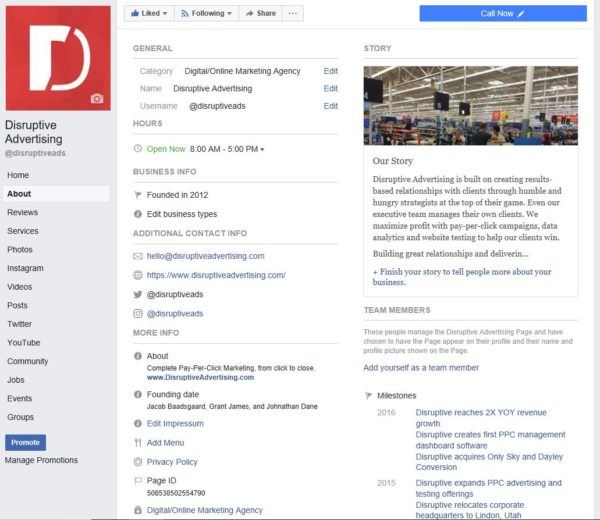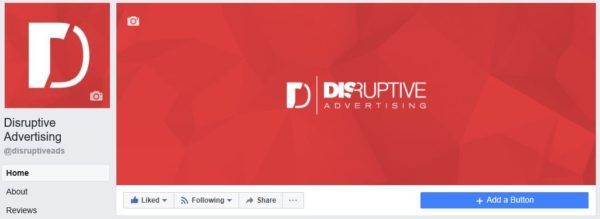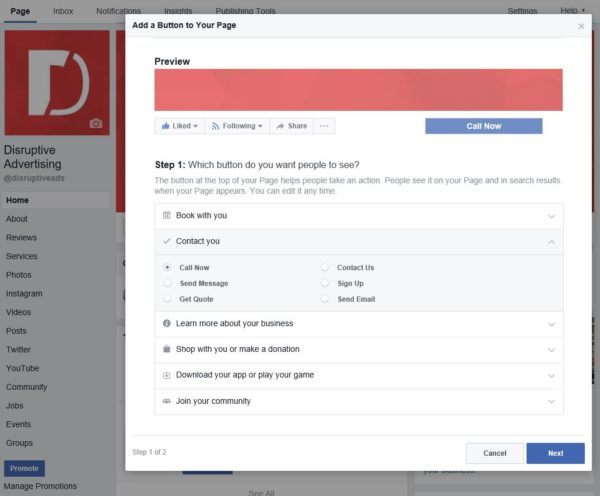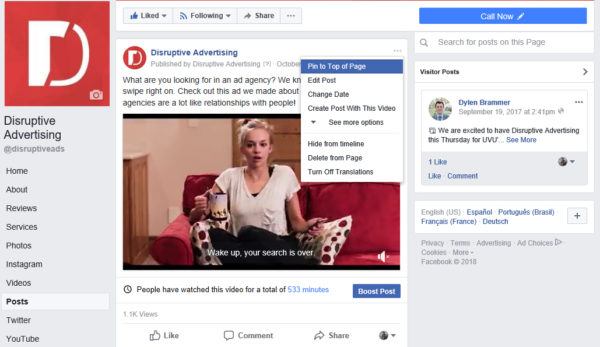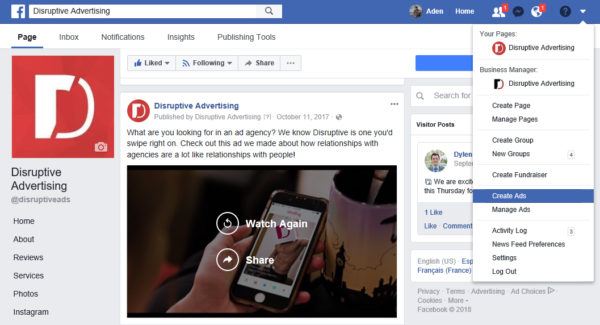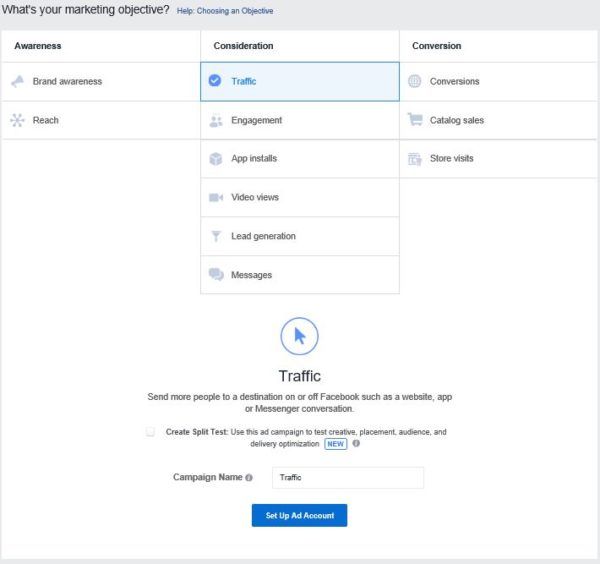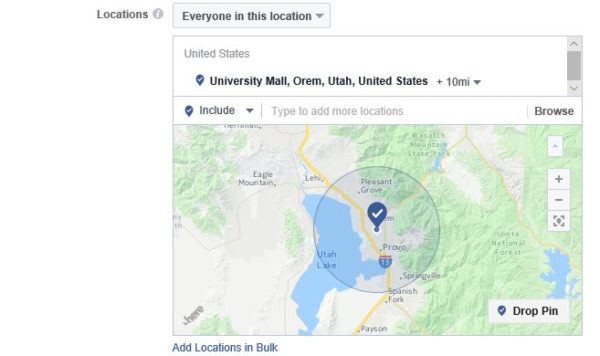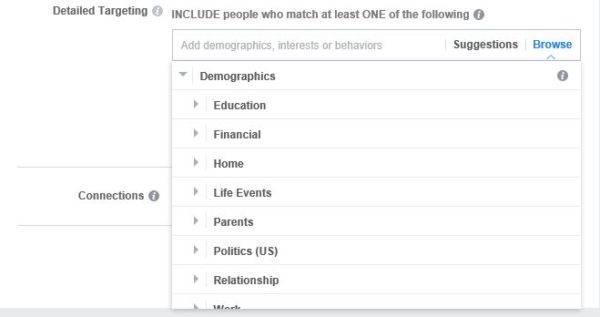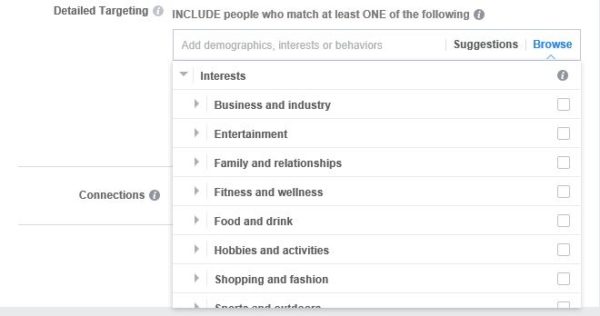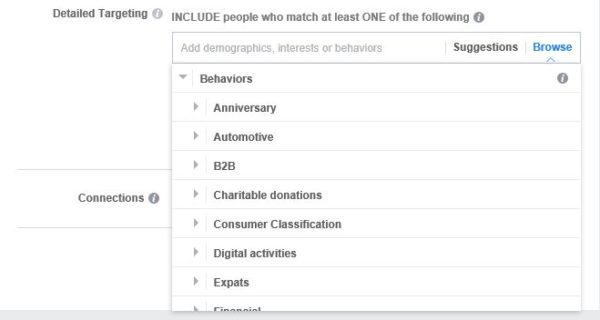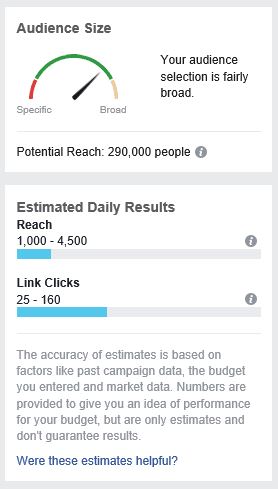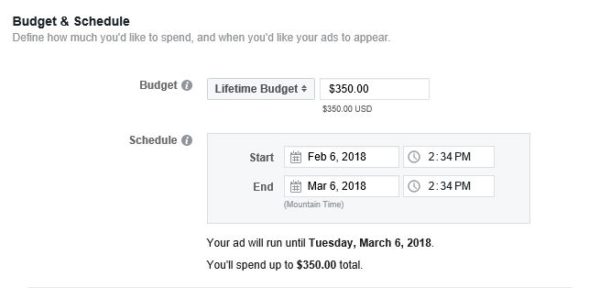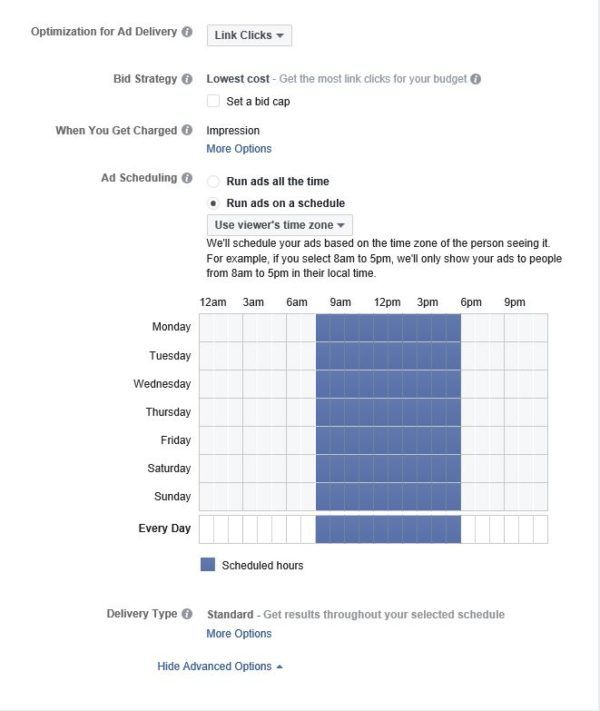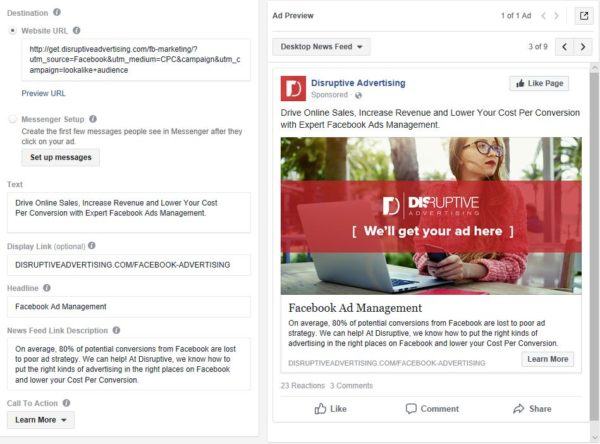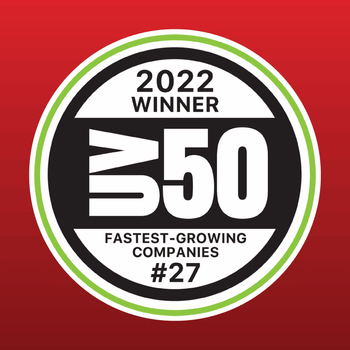Facebook Marketing: A Practical Guide to Getting Started on Facebook
by Aden Andrus • February 6, 2018
Facebook marketing. Everyone says you should be doing it, but knowing you should be marketing your business online and actually doing it effectively are two very different things.
Setting up a business page, running ads, putting together posting schedules, creating great content…where do you even begin?
The good news is, in this post, we’re going to take the mystery out of Facebook marketing. Facebook marketing is a big topic, so this won’t be a quick read, but we’ll cover everything you need to know to market your business on Facebook. No fluff, just practical advice you can use today.
Ready? Let’s dive in!
Why Facebook Marketing?
Before we dive too deeply into the specifics of Facebook marketing, let’s take a step back and look at why Facebook marketing is a good investment for most businesses.
The answer is fairly simple: reach.
Good digital marketing allows you to connect with potential customers who would never otherwise buy from your business. Thanks to the internet, these people can be anywhere in the world and if they’re interested in what you’re selling, you can advertise to them online.
The trick, of course, is figuring out how to reach your target audience. This is where Facebook really shines.
As of December 2017, Facebook has 1.4 billion daily active users across the globe. Yes, that’s billion with a “b”. If that’s not enough, those users spend an average of 50 minutes every day on Facebook.
So, if you want to get in front of a huge audience of potential customers, Facebook is pretty hard to beat.
However, all of that reach comes with a downside: most of those users could care less about what you’re selling. If you aren’t careful with your Facebook marketing, you could end up spending a lot of time, money and effort marketing your business to the wrong people.
As with any marketing channel, the trick to Facebook marketing is figuring out how to put the right marketing content in front of the right people at the right time…which is what the rest of this article is all about.
What Makes Facebook Marketing Different
Good marketing is all about building relationships. Yes, you might think about your marketing in terms of pricing, return-on-ad-spend, engagement rates or other broad metrics, but for your customers, it’s all about the relationship they have with your brand.
Do I trust your company? Do I believe in your vision or message? Do I feel like your business is committed to meeting my needs? Do I feel like your product or service deserves my money?
Your potential customers are constantly asking themselves these kinds of questions. Before they’ll make a purchase, they need to feel like they can trust your business, your brand and what you’re selling.
In other words, they want a relationship of trust with your business.
The good news is, Facebook is a online platform dedicated to relationships. Social media is all about building, sharing and maintaining relationships with other people. This is important, because the success or failure of your Facebook marketing will depend on your ability to use the social, relationship-focused nature of Facebook to build positive relationships with your potential customers.
I bring this idea up now because it will be fundamental to everything we discuss in the rest of this article. For your Facebook marketing to succeed, you need to be focused on helping your target audience develop a positive relationship with your business.
As with your personal relationships, if your business comes off as annoying, spammy or demanding, people won’t like you and won’t respond well to your marketing. But, if you’re helpful, entertaining and provide value, you’ll win people’s hearts—and their business.
Setting Up Your Facebook Business Page
Regardless of how you want to use Facebook to market your company, you can’t do Facebook marketing without a Facebook Page. This is pretty easy (60 million businesses have already done it, which means Facebook has had a lot of opportunities to perfect their process), so let’s quickly walk through the setup process.
Creating Your Facebook Page
Facebook Pages are different from Facebook Profiles. Yes, a Facebook Page looks an awful lot like a Facebook Profile, but it offers a variety of different marketing options that you don’t get with a normal profile.
For example, here’s what Disruptive’s Facebook Page looks like:
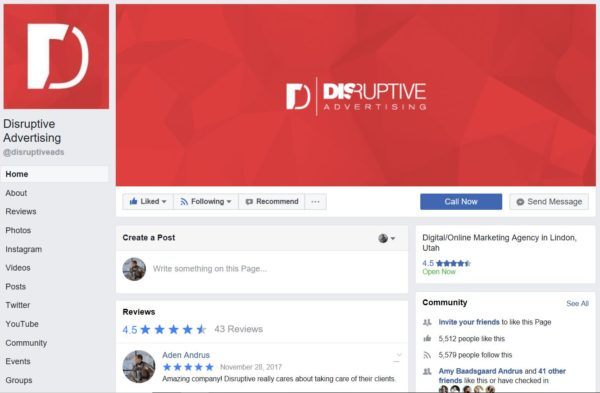
As you can see above, you “like” a business rather than “friending” it and a Facebook Page can have reviews, list an address, include chat options and even offer call-to-action buttons like “Call Now” or “Visit Website”.
In case you’re thinking about trying to market your business from a Facebook Profile, be warned, Facebook has a tendency to delete or block accounts that use Profiles this way. Plus, a Facebook Page gives you access to marketing options like Facebook Ads that you can’t run with a Profile, so it’s well worth your while to create a Facebook Page for your business.
To create your Facebook Page, click here.
At this point, you have the option to choose what type of Page you want to create:
The type of page you select will change what fields you’ll have access to on your page, so it’s best to pick a page type that closely fits what you want to accomplish on Facebook.
For example, if you’re a local charity that routinely hosts community events to raise funds, you’re probably better off picking “Cause or Community” than “Local Business or Place”, even though you technically straddle both options.
You have to have a personal Facebook account to manage a Facebook Page, so you’ll need to sign into your personal account after you pick your business name (choose your name carefully, because changing it after your Page is live can be a real headache).
Once you’re logged in and have picked your business name, hit “Get Started” to create your Page! You’ll be redirected to your shiny new Page, which you’ll want to customize in a few ways before you start using it.
Profile Picture
This is social media, so your profile picture matters. It’s what will identify your business across Facebook, whether you’re commenting on a post or showing up in search results.
If you’re a bigger business with an official logo, this is a great place to use it.
Alternatively, if you’re a freelancer or have a personality-based business (artist, band, public figure, MLM, etc), you may want to use a more personalized photo for your profile picture. Just make sure that it is at least 180 x 180 pixels.
Cover Photo
Adding a cover photo is also a good idea, since nothing screams “I don’t know what I’m doing on Facebook” like a blank cover photo. Your cover photo is the big horizontal image at the top of your Facebook Page.
Unlike your profile picture, you can be somewhat flexible and creative with your cover photo. For example, at Disruptive, we’ve done different holiday-themed cover photos during different times of the year.
Alternatively, you can also use your cover photo to advertise upcoming events or special sales that you might be currently running.
Officially, Facebook cover photos are 851 pixels by 315 pixels, but (like your profile picture) you always have the option to upload a picture that doesn’t fit those dimensions and use Facebook’s cropping function to size your picture appropriately.
Description
Another important element of a Facebook Page is your description. Pictures are great, but some things really are best said with, you know, words.
If you’re in the welcome menu, all you have to do to add your description is click “Add a Short Description” (handy, eh?). Facebook has a character limit of 155 characters, but a good description should be short and sweet, so you hopefully won’t have to worry about hitting the limit.
If you want to edit your description later on, you can always click on “About” in the menu under your profile picture. This will give you the option to edit a variety of details about your business:
In general, a professional description with a dash of personality works best. Remember, you’re trying to build a relationship, so you want to come off as interesting and memorable. But, you’re still running a business, so you need to sound professional, too.
Create a Username
Finally, before you can start marketing your business on Facebook, you will need to create a username. This is the unique identifier Facebook will use for your custom Facebook URL (aka, vanity URL).
As mentioned previously, changing your Facebook URL down the road can be fairly difficult, so make sure you pick a name you feel comfortable using for the foreseeable future.
Unfortunately, with 60 million other businesses on Facebook, there’s a good chance that the username you want to use may be taken already. In this situation, you’ll have 50 characters to find a way to make your username unique without creating a name that’s hard to remember or associate with your business.
Other Facebook Page Elements to Consider
At this point, your Facebook Page is technically complete and you can start running ads or sharing your Page. However, there are a few additional fields you may want to complete, especially if you plan on making heavy use of your Facebook Page in your online marketing efforts.
Add Other Users
One of the benefits a Facebook Page has over a Facebook Profile is the ability to allow multiple people to help manage your Page. To do that, you’ll need to manage your Page Roles.
Click on the “Settings” link at the top right hand of your Page and then click “Page Roles” in the left-hand bar. From there, you’ll have the ability to find people by name or email address (using the “Assign a New Page Role” search bar) and give them a role on your page.
Notifications
While this doesn’t directly affect your ability to market your business on Facebook, you can click on the “Notifications” option in the “Settings” left-hand menu bar to decide how frequently you want Facebook to notify you about activity on your Page.
Call-to-Action
Remember earlier when we talked about the ability to add a call-to-action (CTA) as one of the perks of creating a Facebook Page? To pick your button, click on “+ Add a Button” under your cover image.
From there, you’ll have several CTA button options to choose from:
Using these options, you can give people a direct way to contact you, book a service, visit your website or even make a purchase. For many of these options, you’ll need to enter a URL, phone number or email, so make sure you know exactly where you want Facebook to send people who click on your button.
Marketing on Facebook
Historically, there have been two effective ways to use your Facebook Page to market your business: 1) build a following organically by posting engaging content or 2) pay to run ads on Facebook.
However, since Facebook only gets paid when you run ads and most business Page content isn’t all that engaging, Facebook has made it increasingly difficult to market your business on their platform using organic content.
Regardless of whether you call this move a money-grab or optimizing their user experience, the fact of the matter is, these days, if you want to market on Facebook, you’ll probably have to pay-to-play.
Organic Reach: Is It Really Dead?
Before we jump into how to set up and run effective Facebook Ads, let’s take a minute to discuss what happened to Facebook organic reach. After all, marketers have been recommending that every business set up a Facebook Page and try to build a following through organic content for the last decade.
What changed?
Unfortunately, over the last few years, Facebook has made it harder and harder to capitalize on the first option. In 2014, Facebook announced that “Pages that post promotional creative should expect their organic distribution to fall significantly over time.”
In 2016, Facebook added elements to their News Feed algorithm to prevent clickbait content from showing up to users. Then, last month, Facebook announced that they would be reconfiguring their algorithm to prioritize “posts from friends and family over public content”.
The end result? According to Facebook:
As we make these updates, Pages may see their reach, video watch time and referral traffic decrease. The impact will vary from Page to Page, driven by factors including the type of content they produce and how people interact with it. Pages making posts that people generally don’t react to or comment on could see the biggest decreases in distribution. Pages whose posts prompt conversations between friends will see less of an effect.
So, if you happen to be managing a wildly popular page like “FailArmy” that already sparks lots of comments and engagement, this update probably won’t hurt you.
If, on the other hand, you’re like most businesses and you either have a small following or don’t get a ton of comments on your posts, it’s time to pay your last respects: your Facebook organic reach is dead.
Should You Keep Posting on Facebook?
While you might not get much organic reach from your Facebook posts, it’s not a good idea to give up on your Facebook Page entirely. Even when organic posting was still a legitimate way to market your business on Facebook, one of the biggest perks of having a Facebook Page was to give potential customers a way to get to know your business.
Remember how important relationships are in Facebook marketing?
Your Facebook Page is how people build a relationship with your business. As a result, what you publish on your Facebook Page is critically important—even if the only people who see it are the ones who are visiting your page because they want to see what your business is all about.
Combining this idea with the fact that your Facebook organic reach will probably be fairly low, your Facebook posts should be designed with potential customers in mind. Now, this doesn’t mean that your Facebook posts should all be ads. In fact, you should generally avoid overly promotional posts on Facebook.
Instead, create posts that help people get to know the people behind the scenes at your company. Show what makes your company “real” and relatable (reviews are another great way to build trust with prospective customers). That way, if people check out your Facebook Page, they’ll feel a connection to you, your product or service and your company vision and be more likely to buy.
Alternatively, if you have good video content that does a good job of introducing people to your brand, that can be another good way to make the most of your Page content.
For example, here’s a video Disruptive runs on our own Page that has generated a lot of positive feedback:
Finally, since your Facebook Page is now more of a landing page than a place to push content, it may be a good idea to pin particularly good content at the top of your page. That way, your best content will be the first thing people see when they visit your Page.
To pin a post, simply click on the down arrow at the upper right of your post and select “Pin to Top of Page”. The post will stay at the top of your page until you pin a new post.
With the recent changes in Facebook’s News Feed algorithm, your organic reach might not be great, but that doesn’t mean your Facebook Page can’t be a great way to build relationships with potential customers. The trick is figuring out which types of content do the best job of convincing people that you’re a company they can trust.
Facebook Advertising
The good news is, while Facebook might be cracking down on organic marketing content in the News Feed, you can still access the power of Facebook marketing…if you’re willing to pay.
Obviously, paying to run sponsored content on Facebook is a lot more expensive than simply posting content to your own page, but Facebook Ads give you access to a much larger audience. If you do it right, Facebook Ads can yield amazing results for your business.
Running Paid Ads on Facebook
Facebook has an interesting advertising model. Under Facebook’s advertising model, you define a target audience that you want to see your ads and then set a budget for how much you are willing to spend during a given time period to get people to do something (watch your video, click your ad, become a lead, make a purchase, etc).
Unlike paid search ads, where you only pay when someone clicks on your ads, Facebook uses something closer to a pay-for-impression model. Facebook’s algorithms do their best to get as many people to take your desired action (aka, convert) as possible with your budget, but if your ads don’t do a good job of getting people to act, you’ll end up paying more for each action.
In other words, Facebook will take your money and put your ads in front of your target audience, but it’s up to you to convince them to convert.
With all that in mind, let’s talk about how to set up a marketing campaign using Facebook Ads.
Setting Up a Facebook Ads Campaign
Facebook Ads uses a 3-tier system for organizing your marketing efforts. Your specific ads are contained within ad sets, which are contained within campaigns.
The first time you create a campaign in Facebook Ads, you’ll have the option to choose between two ad management platforms: Ad Manager and the Power Editor. In general, I recommend Ad Manager for beginners, but if you are running dozens or hundreds of ads, you may want the added tools of the Power Editor.
To create your first campaign, click on the downward arrow in the upper right hand corner of Facebook and click on “Create Ads”:
You’ll be taken to the Ads Manager, where you’ll be prompted to choose a campaign objective:
Choose your objective, name your campaign and click “Set Up Ad Account” (or “Continue” if this isn’t the first time you’ve created ads on this account).
Next, you’ll be given a variety of targeting options you can use to define your target audience:
Location
If your business is local, only ships to certain areas or only wants to advertise to a certain location, this is a great setting to use. Basically, this option allows you to use various levels of location targeting (city, state, zip code, country, etc) to target anyone within a specified radius of that location.
For example, if you want to target a shopping center, you can type in the name or address and set a radius around your location.
You can also target people who only live in that specific location, which is great if you’re someone like a dentist (versus people who are simply visiting that specific location). Or you can target “everyone in this location,” which includes both residents and people passing by.
Demographics
Depending on who your business typically serves, this setting can be a good way to make sure that your ads are only being shown to people of the right educational level, political affiliation, relationship status or a variety of other categories.
The usefulness of demographic targeting will depend heavily on how well you know the demographics of the audience you want to target. For example, relationship status changes are a great targeting setting for a wedding venue…but not so helpful for a restaurant.
Interests
Facebook determines a person’s “interests” by looking at the listed interests in a user’s profile and the pages they have liked.
Here again, the usefulness of “Interests” will vary depending on what your business is trying to sell.
Behaviors
Behaviors allows you to target people based on job role, purchasing behavior or other specific actions that a user takes on Facebook.
As you might imagine, while these targeting options are interesting, certain companies will get a lot more value out of these targeting options than others. Fortunately, though, audience targeting isn’t your only targeting option for Facebook Ads.
In addition to the general targeting options listed above, there are a couple of other ways to target your ads that you should be aware of.
Retargeting
Another effective way to build an audience on Facebook is through retargeting. Facebook retargeting works much the same as every other type of retargeting, with one special advantage: you can use Facebook retargeting to create lookalike audiences.
We won’t get into the specifics of how to set up and use Facebook retargeting in this article, but it’s a great option to be aware of. For more information on how to set up and use Facebook retargeting, read this article.
Lookalike Audiences
Hopefully, in the process of marketing your business, you’ve collected a large list of emails. The good news is, you can upload that list of emails to Facebook and Facebook will find any profile associated with an email on that list. All of those profiles will go into a new custom audience that you can then target on Facebook.
So, if someone visited your website, filled out a form and then never responded to your outreach attempts, you can use this feature to get back in front of them on Facebook.
However, it doesn’t stop there.
Facebook also has a feature called “lookalike audiences” that identifies Facebook users who are very similar to the users in your email list and creates an audience around those users that you can market to. This algorithm is remarkably effective, which means you can essentially use lookalike audiences to market to thousands or even millions of people who are highly similar to the people who have already expressed an interest in your firm.
As an added bonus, you can use lookalike audiences with your retargeting audiences, too, so you can focus your marketing efforts on the people who are most likely to respond to your ads. To learn more about how to use lookalike audiences, check out this article.
As you adjust your targeting, you’ll notice that the display gauge in the upper right-hand corner of the page updates with estimates of your audience size and estimated daily results.
These numbers take your objective, targeting and budget into account to give you an estimate of what you can expect from your advertising.
As you can probably imagine, what you’re selling and the ads you create can have a huge impact on how effective your ads actually are, but its a good idea to keep an eye on this information to get a feel for whether or not your targeting and budget are reasonable.
Finally, you have the option to define your budget and what metric Facebook will be optimizing your ad placements for. We’ll get into detail about how to pick your budget in a minute, but for now, let’s quickly talk about what your options are in this section.
The biggest decision here is whether you choose to run ads with a lifetime budget or a daily budget. With a daily budget, your ads will run all day, every day, but you can run the campaign for as long as you like and Facebook will turn off your ads when you hit your budget.
With a lifetime budget, your ads will run for a set period and you won’t spend more than your budget. However, Facebook may spend more on certain days and less on others. Also, the lifetime budget option gives you access to dayparting, which allows you to control what days and times your ads are shown.
The rest of these settings are fairly specific to your campaign and business goals, so we won’t worry about them for now. On to ad creation!
Creating an Ad
At this point, whether you realized it or not, you’ve created a campaign and an ad set. Now it’s time for the fun part, actually creating your ads! First, you’ll need to pick an ad format:
These ad types are fairly self-explanatory and most people opt for a carousel, single image or single video ad type. For certain businesses, canvas ads can be an interesting option as well (for more on that, click here).
At this point, you’ll need to upload a 1,200 pixel by 628 pixel featured image (or images/video, depending on the format you chose), write your headlines and body copy, pick an appropriate call-to-action and add any links you want people to click on.
In previous years, Facebook would not allow ads with images that were only 20% text. Today, Facebook is more relaxed about this rule, but it still gives priority to images with less text.
Fortunately, Facebook does offer a tool you can use to get a feel for how closely your image follows their guidelines, which you can check out here.
As you can probably imagine, these guidelines put a lot of pressure on you to write compelling ad copy for your Facebook ads. Here are a few things to keep in mind as you put your Facebook ads together.
Stay on Target
What’s the first thing you do when you create a Facebook Ad? You choose an objective, which aligns with the goal you want to accomplish. As you create your ads, you should constantly be asking yourself, “How will this help me achieve my goal?”
An ad meant to drive sales will have very different copy and imagery than an ad intended to get users engaging on a mobile app.
-
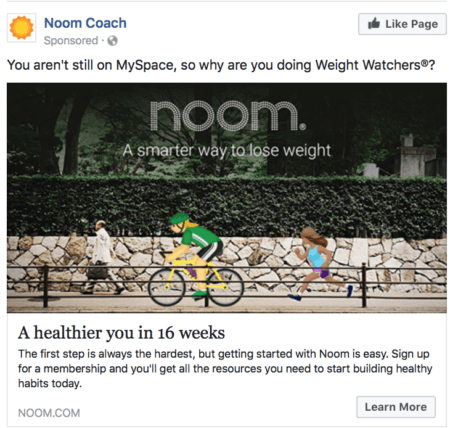
This ad uses “Learn More” to win over tentative users, instead of a more immediate “Sign-Up” CTA that might lose them.
With this in mind, you’ll also want to choose your CTA early on, even though it’s one of the last steps in the ad creation process. Knowing whether you want users to “learn more,” “contact us,” or “shop now” can have a big effect on how you design your ad.
Think About Your Audience
Understanding your audience is just as important as knowing what you want them to do. How will they use your product? What pain points do they have that you need to solve? Even within your overall audience, different niches will have different priorities, problems, and objections.
-
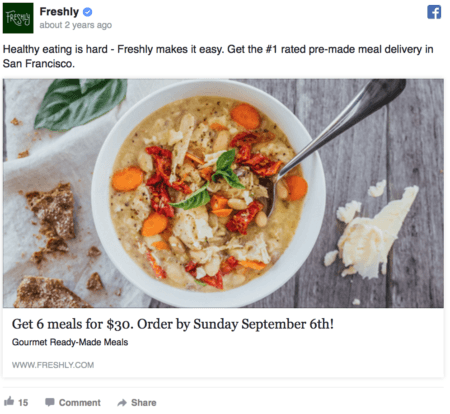
This ad solves the pain point of “healthy eating is hard” – not that it’s “expensive,” which would be the pain point for a different audience.
Picking the right images and ad copy is all about knowing who your audience is and what they want. If you don’t know who you are targeting, you’ll never be able to convince them to convert.
Create a Hook
Your hook is the angle that you’re going to use to reel potential customers in. This is what will grab their attention. Emotional hooks are always a good option, but logical and educational hooks also work well.
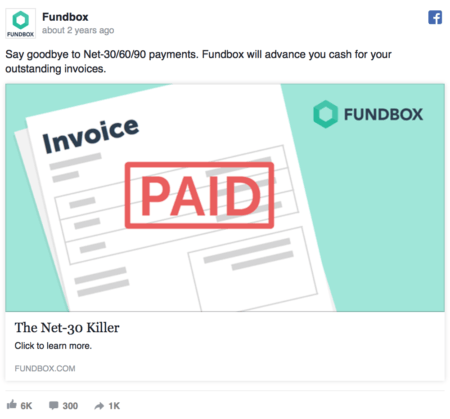
In many cases, the hook will translate directly into the headline. The hook should tell users “why” they should care, click, watch, or convert.
Sometimes, the “why” comes before the “what,” offering up the pain point or the problem before the actual solution. This is a great way to approach your advertising, because it puts the problem fresh in the customer’s mind, giving you the perfect opportunity to present a solution they’ll be excited to hear.
Anticipate Their Objections
We mentioned objections briefly in the “understand your audience” section, but it’s essential to consider it again when you’re actively writing the ad copy: you must anticipate your audience’s objections so you can fight them.
Objections will be what prevents a user from converting, or even clicking. They assume that your meal delivery service will be too expensive, or that your beach shoes will be cheap material and fall apart the second they hit the hot sand.
-
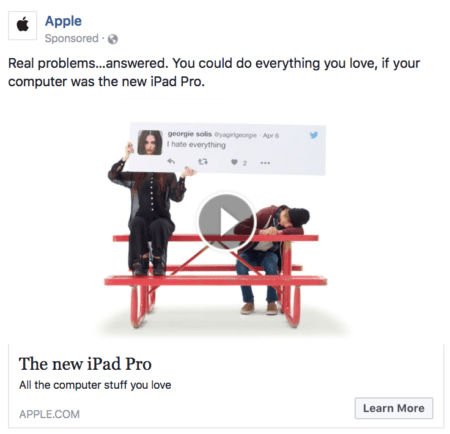
Apple’s simple copy reminds users that “All the computer stuff you love” is still available on the iPad Pro. This is offsetting an objection of limited capabilities.
In addition, you should make sure that your ads don’t provoke any objections, and—if possible—puts them to rest. In some cases, even adding just one word to the copy can help prevent objections from ruining your ad’s potential. Saying “affordable meal delivery service” and “durable beach shoes” can offset objections from the get-go.
Keep it Simple, Stupid
For many business owners and marketers, our first instinct is to be like the entrepreneurs on Shark Tank who keep saying “oh and one more thing!” even after the Sharks have already made offers or bowed out. We know how amazing our products are, and we want the whole world to know every single reason why.
Realistically, you can only fit one or maybe two feature/benefits into a single Facebook or Instagram Ad. This means that we need to choose the one or two benefits that will speak to a specific audience’s pain points and interests the strongest.
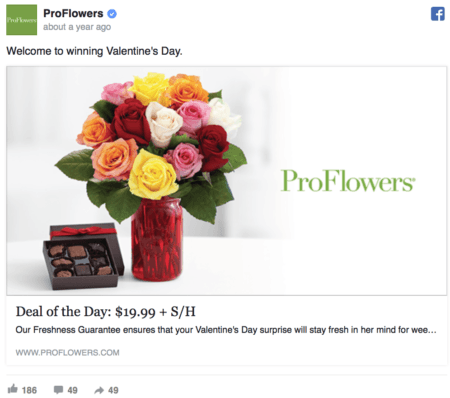
Your sentences should also be short and sweet. Users typically skim through ad copy, so you want your point to get across cleanly and immediately.
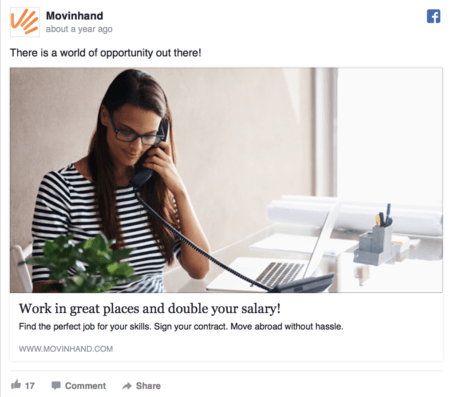
One way to trim down your ad copy is to write a sentence and then chop away at least a third of the words. Keep the phrasing as compact and to-the-point as possible and your Facebook Ad copy will be significantly stronger.
While you’re fine-tuning the copy itself (which typically means cutting words), go through and eliminate any corny language that makes you sell like a bad car salesman or like an email containing a computer-crashing virus.
This includes how you choose to punctuate and capitalize the copy—no one wants to see all caps informing you that “ONLY THREE DAYS LEFT ON THE BEST SALE WE’VE EVER HAD DON’T MISS IT YOU’LL REGRET IT.”
-
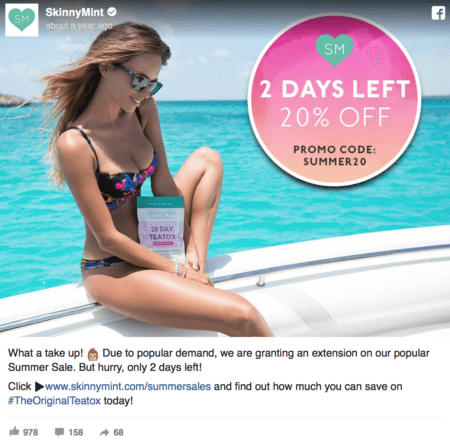
There’s no reason for this ad to have the link to the site in the ad itself. It should just be in the CTAit clutters the copy and looks like spam. It also lacks transparency by saying “see how much you can save!” instead of telling users outright.
Some emojis can be okay, but adding lots of arrows pointing to where you want users to click is a no-go. You’ll also want to eliminate phrases like “Stock going fast, you’ll miss out if you don’t order now!” This works fine in an email, but it’s wasting up limited space in an ad, and just comes across like a bad line.
-
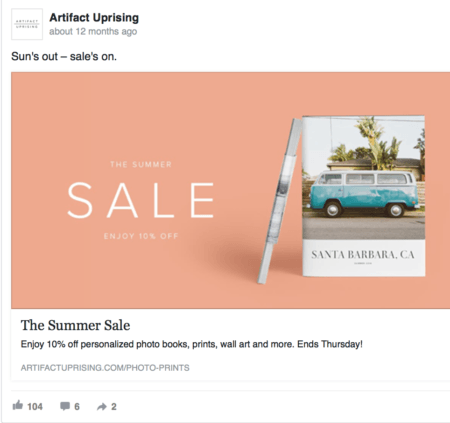
Short and sweet. It’s clearly a promotion, but it doesn’t feel like someone is trying to force you to buy something.
As we discussed earlier, Facebook marketing is all about relationships, so try to sound like a real human person instead of a broken record trying to trick the user into buying something.
Create Specific Landing Pages
As a general rule of thumb, it’s best not to send Facebook Ad traffic to your home page. A good Facebook ad will have a very specific message and that message needs to be closely reflected by the content of the landing page.
Unfortunately, as great as your homepage might be, it has to meet a lot of needs, which makes it hard to focus your business’s home page on delivering one specific message that happens to match the message of your ad.
Instead, it’s best to create a separate landing page for each new campaign. This will make your ads more effective and allow you to make the most out of those Facebook clicks.
As you create your landing pages, it’s a good idea to use what you know about your audience from your Facebook audience targeting. For example, if you’re mostly targeting 60+ year old women, a picture of a mom with kids may not resonate well with your target audience. On the other hand, a picture of a 60+ client might work a good deal better.
To be honest, if you aren’t willing to go to the trouble of creating specific landing pages for your Facebook ads, running Facebook ads may not be for you. It might get you a lot of traffic, but paying to send a lot of traffic to the wrong page is a great way to waste a lot of money.
The quality of your ads can make or break your Facebook marketing. You can be targeting the right audience at the right times and have all the budget in the world, but if your ads don’t sell, it’s all a waste of money.
How Much Do You Need to Spend?
Speaking of wasting money, let’s circle back to your Facebook budget. When you get right down to it, your overall Facebook marketing strategy and your Facebook marketing budget go hand-in-hand.
If you approach it right, you can (and should) plan both at the same time. After all, if you know who you are marketing to and what they are worth, you can use that information to figure out how much you can afford to spend on marketing to bring in a new customer.
There are 4 basic steps to creating an effective Facebook marketing strategy and budget.
1. Define Your Goals
To figure out what you need to spend on Facebook, you first need to clarify what your goals are for Facebook advertising. These can vary quite a bit depending on whether your ultimate goal is to drive clicks, conversions or leads, sales, revenue or a certain return-on-investment (ROI).
When you get right down to it, the ultimate goal of Facebook marketing should be ROI. After all, if your Facebook spend isn’t driving profitable revenue for your business, why are you advertising on Facebook?
Clicks and even conversions are great, but your company doesn’t make money from clicks (in fact, you actually spend money on clicks) or conversions. It makes money from sales.
With that in mind, the first thing you need to determine before you decide what your Facebook marketing budget should be is to decide how much revenue you want to drive using Facebook. Once you know that, you can use that information to determine how much ad spend it will take to reach that revenue goal.
2. Create Your Buyer Personas
Once you know how much money you want to make from Facebook advertising, you need to identify who you are marketing to.
Now, about 72% of marketers are familiar with buyer personas, but only 30% actually create effective buyer personas that aid them in their marketing goals.
That’s a problem, because different buyer personas require different advertising. On Facebook, that means different target audiences, different messaging and different landing pages. Even more importantly, different buyer personas turn into different types of buyers.
So guess what? If you don’t understand your buyer personas, you can’t create an effective Facebook budget!
If you’ve got a sales team, talking to sales can be one of the fastest ways to get a decent buyer persona together. After all, they’re the ones who talk to your customers the most, right?
However, even talking to your sales team and doing a little research isn’t enough to really get at the level of detail you need to put together an effective Facebook budget. To do that, you need to get on the phone and call your actual customers.
Ask how they found you, why they converted and what convinced them to pay you. This information will give you a ton of insight into your marketing and sales funnels that you can use to both improve the performance of your paid search advertising and choose your Facebook marketing budget.
3. Figure Out What Your Buyer Personas are Worth
Typically, people look at buyer personas as a good way to craft an effective marketing strategy. Buyer personas are great for this, but they are also an important part of putting together an effective Facebook marketing budget.
For example, imagine you are advertising for a SaaS business called SaaS-A-Frass that has the following pricing structure:
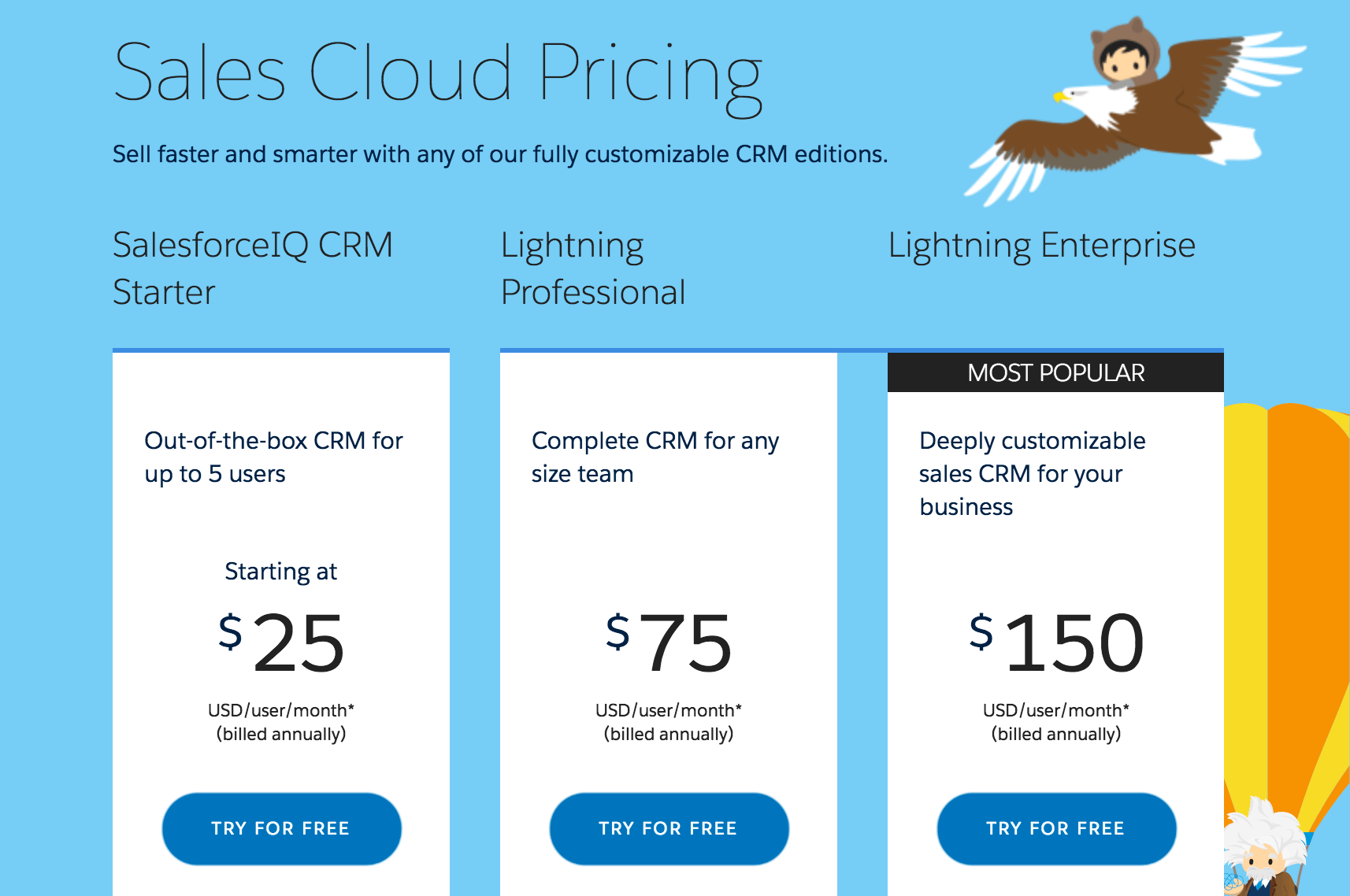
In this situation, you’re probably targeting 3 different buyer personas:
- Small business “Steve”
- Mid-market business “Mandy”
- Enterprise business “Edward”
Small business “Steve” has much smaller and simpler business needs than Edward or Mandy, so he’ll probably choose the Starter package. Mandy will probably want the Professional package and Edward will likely need the Enterprise package.
Assuming that Steve, Mandy and Edward stick around for an average of 14 months, 4 years and 9 years, respectively (average lifetimes for a SaaS client) and buy 5, 20 and 100 licenses (again, respectively), here’s the lifetime value for each of these personas ( [licenses/mo] x [# of licenses] x [typical customer lifespan in months] ):
Lifetime Value
- Steve: $1,750
- Mandy: $72,000
- Edward: $1,590,000
These numbers look really exciting, but not all of that money is profit.
A normal SaaS company pays about 22% for fulfillment, 9% to sales and has a 40% overhead, leaving them with about 29% of the lifetime value of each client to play around with. That means to simply break even, SaaS-A-Frass has to spend less than the following to acquire a customer from Facebook:
Maximum Acquisition Cost
- Steve: $507.50
- Mandy: $20,880
- Edward: $461,100
If SaaS-A-Frass can keep their acquisition cost below this threshold, they’ll make money. If it costs more than this to acquire each of these customers, they’ll lose money.
See why buyer personas are so important to budgeting?
Of course, it’s unlikely that the market is saturated with Edwards, so SaaS-A-Frass will need a mix of these deals to hit their revenue goals. That mix will dictate their Facebook budget.
So, if SaaS-A-Frass is willing to spend $0.18 on marketing to produce $1.00 in lifetime value (for a 11% total profit margin), SaaS-A-Frass’s can afford to pay the following for each buyer persona:
Customer Acquisition Cost
- Steve: $315
- Mandy: $3,750
- Edward: $286,200
If SaaS-A-Frass can’t produce paying customers from a particular buyer persona at a price point below this threshold, they probably shouldn’t be marketing to that buyer persona.
However, if SaaS-A-Frass’s Facebook ads are currently producing buyers from each persona at these CAC (or even a CAC below these thresholds), SaaS-A-Frass can use that information to then calculate their Facebook marketing budget.
4. Set Your Budget
At this point, things are pretty simple. Just take your CAC, average purchase order value and average number of purchase (if you have a subscription model, you can just use the average lifespan of each buyer persona here) and plug them into this calculator!
The default for this calculator shows the monthly budget and ROI for SaaS-A-Frass, assuming that SaaS-A-Frass wants to produce $2,425,500 in new revenue from Facebook advertising each month and they’ve determined that to do that, they need their Facebook marketing to produce 100 sales a month (90 Steves, 9 Mandys and 1 Edward).
Per our example, a new Steve pays $125/mo for an average of 14 months, a new Mandy pays $1,500/mo for an average of 48 months and a new Edward pays $15,000/mo for 108 months.
Plugging all of that into the calculator, SaaS-A-Frass will need to budget $348,300/mo for Facebook marketing to achieve their new lifetime revenue goals.
See? I told you this part is easy! Play around with the calculator and your different buyer persona numbers and see what sort of Facebook budget makes sense for your business. Or, if you’re dealing with a predetermined budget, use this calculator to look at your different buyer personas and see which target audiences you should be focused on.
Now, as you might imagine, this approach isn’t a perfect estimate of what it will take to hit your revenue goals. This calculator is only as accurate as the information you can give it. But, it’s a lot better than picking your monthly at random and hoping that your Facebook budget will produce the results you need.
Conclusion
Although it’s hard to get great organic reach out of Facebook these days, Facebook marketing is still a great way to reach potential customers across the globe. Facebook has an enormous, highly active user base that you can easily market to using Facebook Ads.
In addition, creating a well-designed Facebook Page is a great way to build important trust and relationships with your target audience. The better they get to know you and your business, the more likely they are to respond well to your ads and become paying customers.
By the way, if you would like some help getting into Facebook marketing (or need some help with your current Facebook marketing campaigns), let me know here or in the comments. I’d love to help!
How do you feel about Facebook marketing? What are your thoughts on Facebook’s deprioritizing of organic content from business pages? How do you think that will affect your Facebook marketing? Leave your thoughts in the comments!


